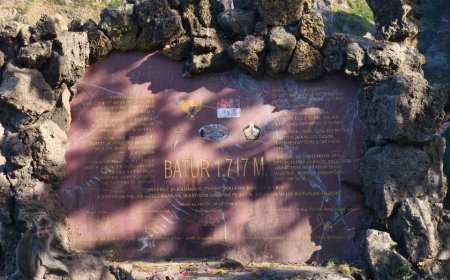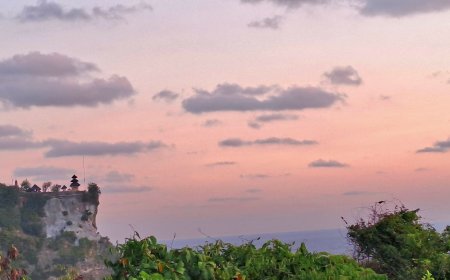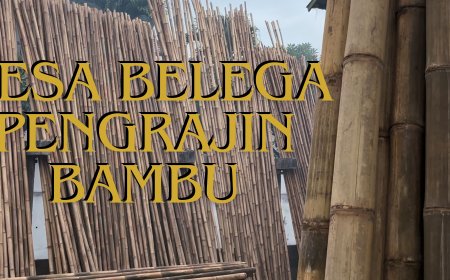The Meaning and Procession of the Rsi Bojana Ceremony in Nyuh Aya Traditional Village: A Sacred Tradition in Village Rituals
The Rsi Bojana Ceremony in Nyuh Aya Traditional Village: A Tradition Honoring Holy Figures in Balinese Hinduism In Nyuh Aya Traditional Village, the Rsi Bojana ceremony is not merely a ritual but also a symbol of noble values and traditions passed down through generations. This article outlines the history of Nyuh Aya Village, closely linked with Arya Kepakisan and his sacred legacy. During the Rsi Bojana ceremony, the villagers present offerings and perform sacred dances, such as the Rejang Dewa Dance,

Rsi Bojana is a sacred offering in Balinese Hindu tradition, specifically dedicated to holy figures who play a role in facilitating a series of grand ceremonies. This offering represents respect and is delivered through the Rsi Yadnya, a special ceremony meant for revered figures in Hinduism. More broadly, Hindus in Bali often encounter the term Rsi Bojana or Rsi Bhojana in various yadnya ceremonies, such as Dewa Yadnya (like Ngenteg Linggih), Pitra Yadnya (like Sawa Wedana), and Rsi Yadnya (like Padiksan), which are usually accompanied by the Rsi Bojana ceremony.
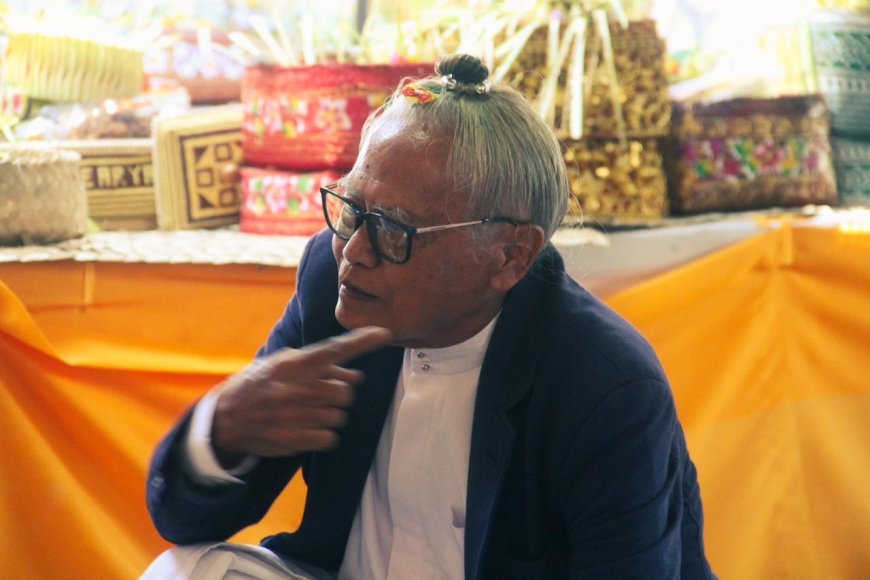
Rsi Bojana Ceremony at Kawitan Temple of Arya Kepakisan (Photo Source: Personal Collection)
Etymologically, the word "Rsi" means "holy person," referring to the leader or officiant of yadnya ceremonies or works, while "Bhojana" means "feast" or "food." Thus, Rsi Bojana can be interpreted as a food offering given in honor of the leaders of the yadnya ceremonies who have helped ensure the smooth conduct of these ceremonies.
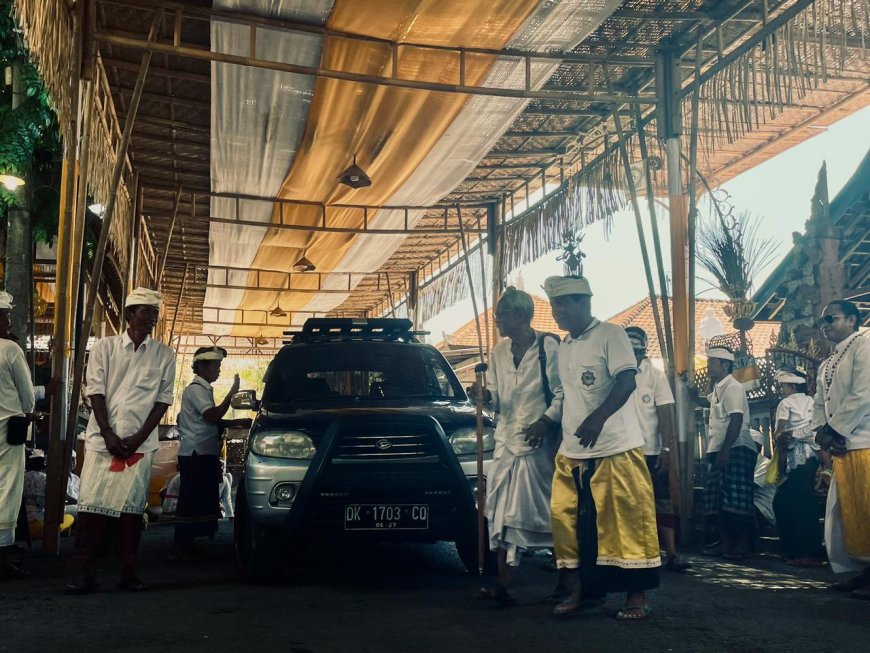
Arrival of Sulinggih at the Rsi Bojana Ceremony Location (Photo Source: Personal Collection)
In the village of Nyuh Aya, the Rsi Bojana ceremony is a vital part of the village's traditional rites, involving the entire community. This tradition not only strengthens the spiritual bond between the community, ancestors, and holy figures but also reinforces social ties among fellow villagers. Through the Rsi Bojana ceremony, the people of Nyuh Aya maintain their traditional values, strengthen their cultural identity, and express gratitude for the blessings they have received.

Nyuh Aya Traditional Village (Photo Source: Personal Collection)
Nyuh Aya village has a rich history steeped in Balinese culture's values of tradition and spirituality. Historical records suggest that the village was founded by Arya Kepakisan, a noble who arrived in Bali in 1352 AD as an envoy of the Majapahit king to accompany Dalem Sri Kresna Kepakisan. After completing his duties to pacify Bali, Arya Kepakisan settled in the area, which was known for a large, luminous coconut tree called Nyuh Aya. This sacred tree became the village's namesake.
As a village marker, Arya Kepakisan brought with him the Taru Agung or Taru Rangsana tree, a blood-red sap-producing angsana tree (Pterocarpus indicus), symbolizing his ancestral land in East Java. This tree still stands at the Kawitan Temple of Arya Kepakisan in Nyuh Aya village, now a spiritual center for his descendants, the Prati Sentana, spread across Bali. At this Kawitan Temple, villagers conduct various yadnya ceremonies to worship Ida Sang Hyang Widhi Wasa and honor their ancestors' spirits.
The Nyuh Aya village tradition continues through various customary rituals, such as the Rsi Bojana ceremony, which is integral to village rites. For the village, these ceremonies are not merely routine rituals but are embodiments of the community's reverence for their ancestors and commitment to cultural values. This tradition is also a symbol of the continuity of culture and spirituality passed down from generation to generation, strengthening the identity of the people of Nyuh Aya in their daily lives.

Rsi Bojana Ceremony at Kawitan Temple of Arya Kepakisan (Photo Source: Personal Collection)
The village ceremonies at Nyuh Aya encompass a series of grand rites that involve various stages of rituals to pay homage and prayers to ancestors, seeking safety for the entire community. According to the schedule, these ceremonies include several rites, from Matur Piuning, Melasti, Mapepada Tawur, to the main event, Puncak Karya Pengenteg, which involves a major ritual aimed at purifying nature and maintaining harmony in life.
An essential component of this ceremonial sequence is Rsi Bojana, held on October 28, 2024. Rsi Bojana is a special offering for Hindu holy persons who have acted as leaders or officiants in the series of events. This event is typically performed as part of Rsi Yadnya, with an array of food offerings symbolizing respect for the holy figures. These offerings, known as bhojana, signify gratitude for the officiants’ services in conducting the ceremonies.
On the appointed date, the Rsi Bojana is accompanied by additional rituals, such as Nyineb, Mendem Bagia Pula Kerti, and Ngaturang Jauman, which are introductory and closing rituals of the main event. These rituals reflect the sincere dedication of Hindus in Nyuh Aya village to practicing their traditions deeply and thoroughly. Through Rsi Bojana, the villagers offer prayers for prosperity and blessings, as well as thanks for the grace they have received.
The Rsi Bojana ceremony not only enhances the sanctity of village rites but also embodies deep respect for the holy figures who have devoted their lives to the community. This creates harmony between people and nature and strengthens the spiritual bonds within the Nyuh Aya community.

Rsi Bojana Ceremony at Kawitan Temple of Arya Kepakisan (Photo Source: Personal Collection)
The Rsi Bojana procession in Nyuh Aya village is a significant moment in the village's ceremonies, aimed at honoring the holy figures who serve as spiritual leaders or officiants in the rituals. The event is solemn and lively, as villagers gather to welcome the holy figures, who are the main guests in this sacred feast.
The procession begins with preparing various offering dishes, neatly arranged in the dining area. These dishes are specially prepared as symbols of bhojana, or food offerings, presented to the holy figures, in line with the Rsi Yadnya tradition. In an atmosphere filled with reverence, the invited holy figures receive these offerings as a form of respect from the villagers.
The Rsi Bojana event is also enlivened with various sacred Balinese dances that hold deep meaning in religious ceremonies. One such dance is the Rejang Dewa Dance, a sacred dance typically performed by village women as an offering to the gods. This is followed by the Baris Gede Dance, symbolizing valor and heroism and expressing the community's devotion to their ancestors.

The Baris Gede Dance, Rejang Dewa Dance, Topeng Tua Dance, and Rejang Renteng Dance (Photo Source: Personal Collection)
There are also several mask dances that enrich the ceremony's atmosphere, including the Topeng Tua Dance and the Penasar Dance. The Topeng Tua character depicts a wise old man, symbolizing ancestral wisdom. Meanwhile, Penasar serves as the narrator, explaining the stories in the dances and conveying moral messages to the audience. These dances not only beautify the ceremony but also enhance the spiritual ambiance accompanying the Rsi Bojana.
The Rsi Bojana procession in Nyuh Aya village reflects the noble values of the Balinese community in honoring their spiritual leaders and celebrating the sacred bond with their ancestors and the gods. Through this ceremony, the community seeks blessings and prosperity in daily life, while also preserving the cultural heritage passed down through generations.






















